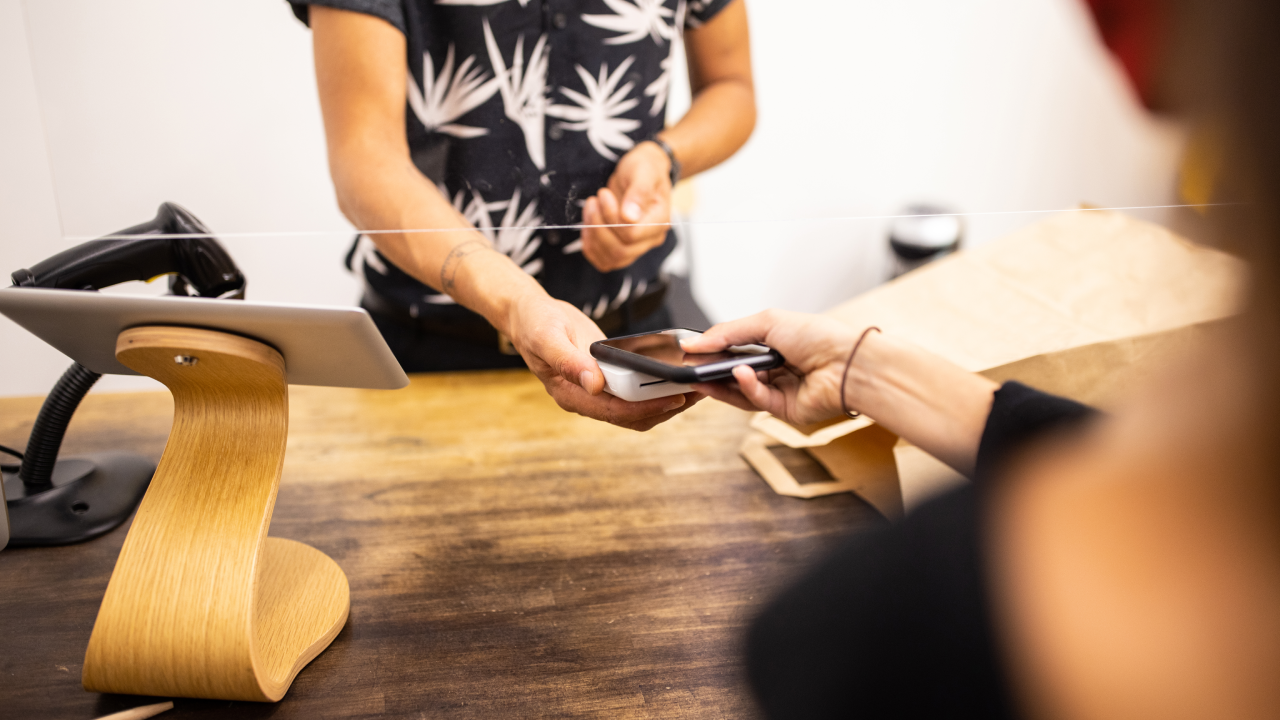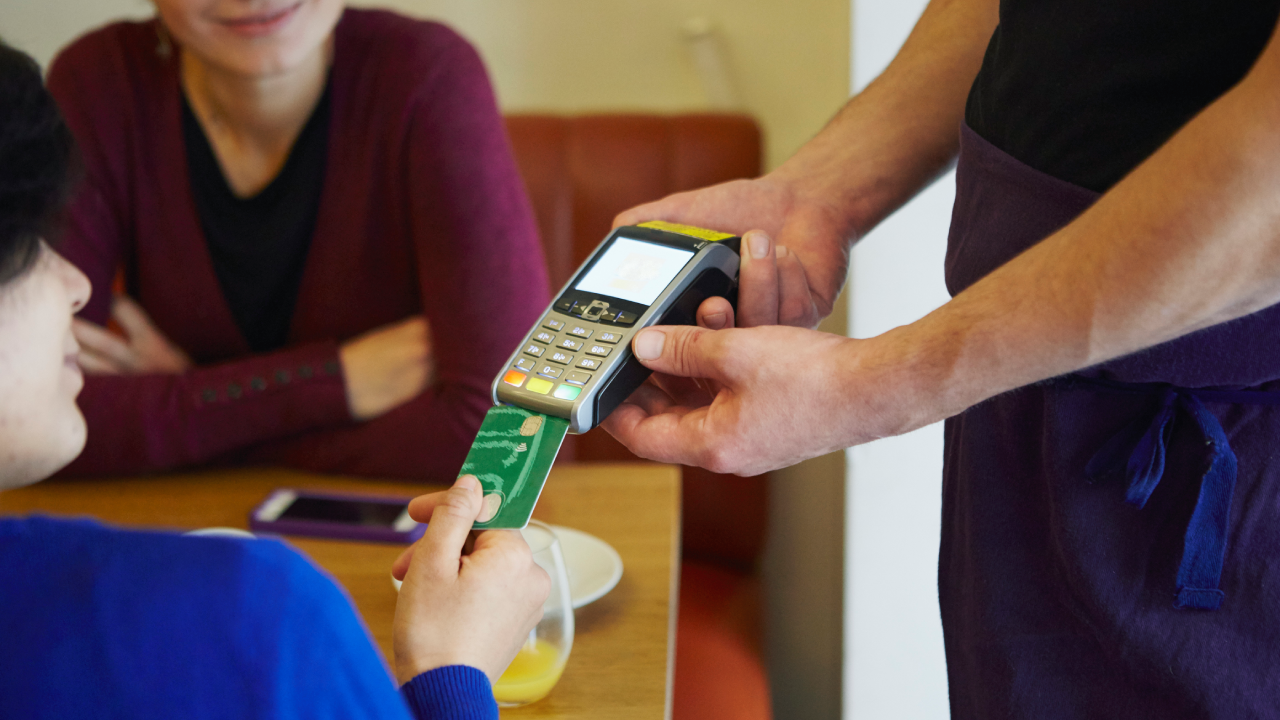Is it safe to add a credit card to my digital wallet?



Key takeaways
- A digital wallet serves as an extra-secure means of storing credit cards and other forms of payment that can be used to conduct transactions.
- Most major credit cards can easily be added to a digital wallet, except for many prepaid cards, business cards and cards issued outside of the U.S.
- The risks of using digital wallets include the chance that the device it is stored on can be breached, lost or stolen, passwords can be hacked and digital money may not be insured by the FDIC.
A digital wallet, also known as an e-wallet, is a digital payment resource that allows you to make monetary transactions using a connected device such as your smartphone.
But while digital wallets eliminate many of the risks associated with physical cards, they aren’t impervious to breaches and cyberattacks. That begs the question: Is it safe to add a credit card to your digital wallet?
By following recommended practices, you can safeguard your credit card and other stored forms of payment within your digital wallet. Read on to learn how to do so and how to add a card to your digital wallet.
What is a digital wallet?
Digital wallets provide a way to conduct online transactions using funds from your financial accounts through computers, smartphones, tablets, smartwatches and other intelligent gadgets, reducing the necessity of carrying a physical wallet.
Among the leading digital wallets/payment options nowadays are Apple Pay, Google Pay, Samsung Pay, PayPal, Venmo and Zelle. You can link your bank account, credit cards and other forms of payment to most digital wallets — some can also store diverse data like your driver’s license, loyalty cards, boarding passes, vouchers, hotel reservations, passes, coupons, gift cards, loyalty reward cards, and tickets for events and flights.
More than nine in 10 Americans used some form of digital payment in 2023, and 20 percent of consumers anticipated using three or more digital wallets, per research by McKinsey & Company.
“Technically, digital wallets are virtual storage systems that allow users to securely store several types of payment information, such as credit and debit card details, bank account numbers and cryptocurrency,” explains Justin Passalaqua, CEO of Worldline, one of the largest digital payment providers in the world.
Essentially, digital wallets are digital versions of a physical wallet, enabling users to make electronic transactions – including online purchases and payments in physical stores – without the need to provide their payment information or a physical card.— Justin Passalaqua, Country Director, Worldline
How to pick a digital wallet
There are many things to consider before choosing a digital wallet, such as the wallet’s offered security, the accepted payment types and any fees you may encounter. You’ll also want to ensure it’s compatible with your credit card issuer and the digital device you use.
For example, if you are an Android user, you won’t be able to use Apple Pay as a digital wallet. If you have a Chase bank account, you may want to consider using Zelle since it’s compatible with the Chase app.
Before choosing, determine which digital wallet options are available to you and your mobile device.
How to add a digital wallet
Adding a credit card to your digital wallet is relatively simple. Follow these recommended steps provided by Passalaqua:
- Install and open the digital wallet app on your smartphone or other electronic device.
- Add your desired payment card/method, often found within the app as an “Add card” button or prompt.
- Enter the required credit card/payment source details within the app.
- Complete any authentication steps, such as retrieving an SMS code for cardholder verification.
- Enable multi-factor authentication whenever possible.
- Once verified, your credit card becomes securely stored in the digital wallet.
“You can then use your stored credit card for contactless transactions remotely or in person. For example, if a brick-and-mortar retailer accepts Tap to Pay, you can tap your smartphone on the physical card reader to pay,” Passalaqua notes. “Or you can pay for online transactions remotely with your digital wallet, rather than grabbing your physical card and entering in the card details.”
Just be aware that your stored bank or credit card may have contactless transaction limits.
Digital wallet restrictions
Most credit and debit cards can be added to a digital wallet, with a few exceptions.
“Cards belonging to minors under the age of 13 are not allowed. This is a restriction by the federal government intended to protect youth from data collection,” notes Kraushaar. “There are also some credit card issuers, countries and regions that do not support the technology or digital wallet platforms for their cards.”
In addition, many prepaid cards and some commercial/business cards, especially those tied to company expenses, cannot be added to a digital wallet.
Are digital wallets safe?
In general, digital wallets are considered much safer than using physical credit cards, which can be more easily lost or stolen. When you lose a physical card, anyone who finds that plastic might be able to use it before you realize it’s missing and attempt to cancel it with the card company.
“Unlike physical cards, digital wallet apps have an extra layer of security and will typically require authentication,” says Passalaqua.
These different authentication types include passphrases, codes, facial recognition, thumbprint technology and/or biometrics.
If you lose your smartphone containing your digital wallet, “the thief would need to know your password, have your thumbprint, or mimic your face or thumbprint to be able to access the app that holds your card information,” says Sean Salter, associate professor of finance at Middle Tennessee State University. “What’s more, digital wallets use a random number — called a token — instead of the consumer’s actual account number. So the risk of having the account number stolen is reduced.”
Also, most apps will encrypt sensitive card data when transferring the information, making the data unreadable in case of a breach, per Passalaqua. He adds that, unlike physical cards, a credit card skimmer (a tiny device attached to an actual card reader) cannot be used to access a digital card.
The risks of using digital wallets
Again, using and relying on digital wallets is generally considered to be protected and reliable. However, if you’re not careful, you can still be susceptible to breaches and bad actors.
“If you use an unreliable public network for transactions or do not follow good password security, the information in the digital wallet could be compromised,” cautions Salter. “And if you lose your mobile device without proper password protection, a hacker might be able to access the stored information.”
Furthermore, there’s a chance the FDIC may not insure the money you use with some digital apps.
“For apps like PayPal and CashApp, the FDIC insurance is there. But for payment functions in more international apps — such as WeChat — your money might be at risk if a hacker steals the account information,” Salter says.
Beyond safety and security, another digital wallet risk is that not every retailer or person you want to send money to accepts payments from digital wallets or possesses the technology to do so. This could leave you in a difficult situation if you’ve left your physical payment methods at home while carrying your digital wallet.
How to avoid digital wallet safety risks
To reduce the odds that your digital wallet will be compromised by fraudsters, hackers and thieves, it’s smart to follow best practices.
The bottom line
Are digital wallets safe? Technically, yes. Digital wallets can be even safer and more secure to use than even the best plastic credit cards, cash, checks and other forms of physical payment. But research digital wallet apps carefully and read reviews before committing to one.
“By taking the proper precautions — such as responsible password management — you can feel confident that your digital wallet is a payment upgrade rather than a liability or risk,” says Kraushaar.





